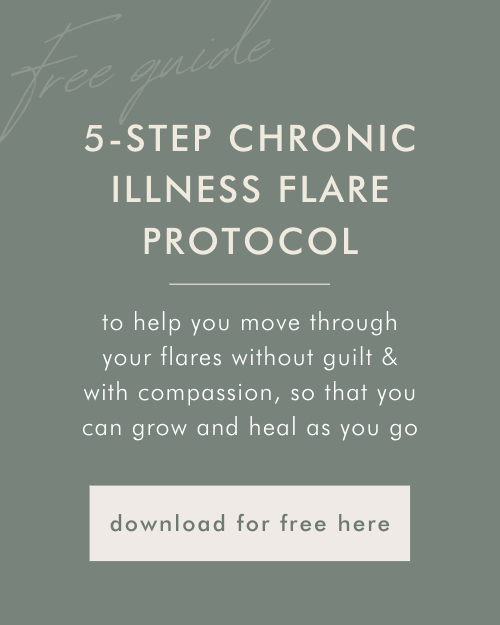5 alternative pacing tips that improve life with chronic illness
Pacing is the practice of spreading your energy smoothly across an expanse of time, rather than using it all up when you have it, only to be left with none once it’s ‘spent’.
Pacing can seem like an alien and unachievable concept to anyone living with chronic illness, and that’s because there’s a common belief that pacing is simply impossible when you’re living in the unpredictable realm of life with chronic illness.
That belief triggers behaviour driven by fear, and we fall into a pattern of beliefs that say if we don’t use energy when we have it, it’ll disappear and we’ll have wasted the golden opportunity to do things mounting up on our to-do lists.
I call this the chronic illness rollercoaster.
It’s a pattern that exists because it exists. The chronic illness rollercoaster - although so common we think it’s gospel - doesn’t need to feature in your life.
Chronic illnesses aren’t as unpredictable as we seem to think they are. It’s the way we live with them - under the direction of the status quo of ‘how a human should do life’ - that makes them unpredictable.
Of course, there are always unprecedented things that can trigger unpredictability within our chronic illness, but even then, it can be easy to get back ‘on track’ when you know your chronic illness as an ally, not as an enemy, and when pacing is second nature.
The spoon analogy that’s widely used within the chronic illness community (fun fact: I only recently caught on to chronic illness folk referring to each other and themselves as ‘spoonies’!) really helps with pacing theory, as spoons = ‘units’ of both physical and emotional energy.
Pacing says that it’s OK for you to keep energy in reserve, with no plans to ‘spend’ it.
It says that you don’t have to do everything in one or two days just because you have a little more energy than usual or aren’t experiencing a flare.
It allows you to plot your exit from the chronic illness rollercoaster (energy/flare peaks and troughs) into a smoother more flow-filled way if living.
Pacing means living your day-to-day life in a chronic illness informed way, not just when you’re flaring, but as a fundamental life practice.
I think there are a few mindset things to address before embarking on a pacing journey, because it’s quite a flip in perspective from what the chronic illness status-quo says.
5 things that make pacing a more realistic (and appealing) option for you.
1. Detach worthiness from productivity.
I think so much of what fuels the chronic illness rollercoaster is the idea that, because we live with chronic illness, we’re ‘less-than' all the muggles or ‘normal healthy people’. We believe that because we ‘can’t do all the things that are expected of humans on this planet’ (so much to unpack there!) we need to prove our worthiness by being productive. Enter trying to do all the things, exhausting yourself, triggering a flare and burnout, taking time to rest and recover, guilt tripping yourself into doing all the things once you’re recovered.
2. Stop thinking that you’re ‘less-than normal people’ because you ‘can’t do’ all the things.
Believing that you can’t do what’s expected pf you by society is the most dis-empowering thing ever, right?! I much prefer to think about choosing to do or not do certain things, because that’s the way I support my body, and am therefore able to show up in this world in the way that makes me feel good. Everyone has a unique set of requirements. Living with chronic illness is just one ‘category’ in a whole plethora of what makes the human race so diverse. Your requirements (note not using the word ‘limitations’) get to be your choice, based on the information your body gives you.
3. Pacing needs to be fun.
If you’re working from a place of believing that you have to pace because you have to live a limited life in which your choice has been taken away from you, of course you’re going to approach it with a glum shadow. Pacing gets to be empowering, and it gets to be fun. It allows you to cut away any dead wood energy drains, and focus on what truly serves you in your life. It asks you to take a really good look at what your life contains, take the time to have a thorough clear out and start to live with intention.
4. Understanding that pacing alone isn’t a silver bullet.
It almost goes without saying that pacing is just one piece of the puzzle, but I think it’s important to highlight that pacing is only one half of its own pie. Pacing is very similar (if not the same) to planning. Planning is only effective when used with tracking. The effectiveness of pacing or planning relies on the practice of connecting, checking-in, tracking and evaluating. All sounds so corporate! This doesn’t have to look like any health related diary you’ve kept before (because we all know how tedious they are!); it can easily be woven into the planning/pacing process as something you do little and often, making tweaks and changes where necessary, sending yourself love and gratitude at any opportunity!
5. You have to be open to working on your self-concept.
Saying no isn’t easy. Having your own back gets challenged. Going against the mainstream grain requires resilience (which you already have in spades!) Believing you’re worth it is essential! Saying ‘this is how I’m going to live my life and I will no longer subscribe to expectations or rules’ is damn exciting, if a bit scary!




